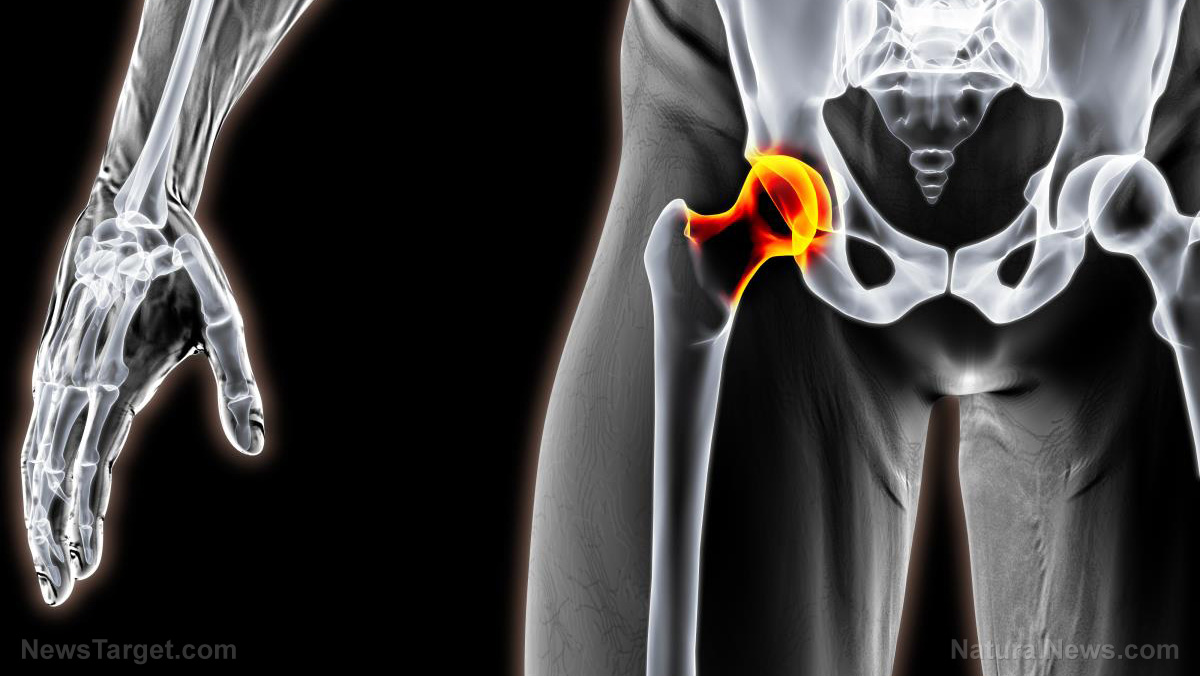Toxic metals in hip replacements found to cause Alzheimer’s
08/24/2017 / By Rhonda Johansson

New advice from the Medicines and Healthcare products Regulatory Agency (MHRA) may mean that approximately 56,000 Britons need to undergo a series of medical tests to determine if they are suffering from muscle or bone damage caused by metal toxicity. The health regulatory group has warned that metal-on-metal hip replacement surgery is more dangerous than previously assumed. The advice comes on the heels of growing evidence which concludes that these implants can induce irreversible (and often asymptomatic) conditions. One of the more debilitating illnesses linked to these surgeries is Alzheimer’s disease.
MHRA Clinical Director of medical devices, Dr. Neil McGuire spoke to DailyMail.co.uk and said that the initial reception of this advice has not been completely positive. Many people find the added testing inconvenient — particularly as many of them say they do not feel better or worse from their hip replacement device. He noted that “it may turn out that we’re chasing smoke, but it may not. If we do find something, we’re not going to keep quiet about it. We don’t want to set a lot of hares running if there’s nothing to find. It may be at the end of it we say, “There’s nothing to see here folks.” Nevertheless, he believes that this new medical advice could potentially save thousands of people.
The concern is whether the cobalt and chromium from the implants leak into the surrounding tissue, damaging cells and leading to adverse conditions. (Related: Metal from hip replacements could cause tumors.)
“We’re always balancing depriving people of the benefits of these devices versus protecting people from harm,” Dr McGuire said.
Metal-on-metal hip replacement has largely been phased out, but it was once touted to be a revolutionary procedure for adults with impaired mobility. After it was introduced in the 1990s, many health professionals in the U.K. recommended the surgery. Young adults, in particular, were told to opt for these devices instead of the usual metal ball and plastic socket. This was because younger patients were more likely to be more active, which would require more support around joints.
Those who did receive a metal-on-metal hip replacement were told to follow-up with their general physician or implanting surgeon every few years. It was already noted that these devices could prompt some soft tissue reactions. Nevertheless, this new advice by the MHRA calls for more stringent checkup guidelines. This includes additional scans, blood tests, and even brain health measurements. Women are requested to have these checks every year for the rest of the lives, even if they are not displaying any negative symptoms. This is due to data that indicates an increased risk among women who have had revision surgery developing complications.
Men, on the other hand, should have themselves checked every three years. Those who are experiencing any form of muscle discomfort or damage should undergo annual checkups.
The alert ended with, “MHRA’s clinical orthopaedics have…observed that soft tissue necrosis may occur in both asymptomatic and symptomatic patients, and believe early detection of these events should give a better revision outcome should this become necessary.”
Most hip replacement failures are determined through x-rays, but there are certain symptoms patients should take note of. Pain is the most worrying effect. Patients who experience any sort of pain around their hip, thigh, low back or knee area should immediately speak with their physician. The risk for hip joint failure increases with age, obesity, and physical trauma caused by injury or improper implanting. Revision surgery is often done to correct a loose implant or replace the entire hip device.
You can read more stories like this on HeavyMetals.news.
Sources include:
Tagged Under: Alzheimer's, cobalt, exposure, hip replacement, hip replacement surgery, toxicity



















